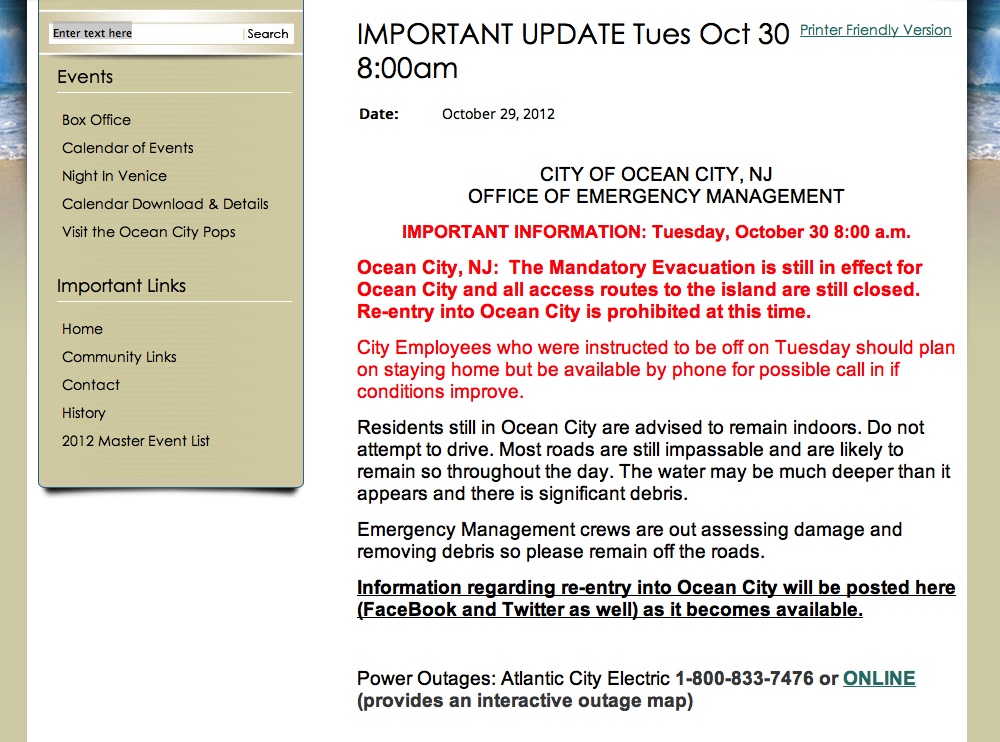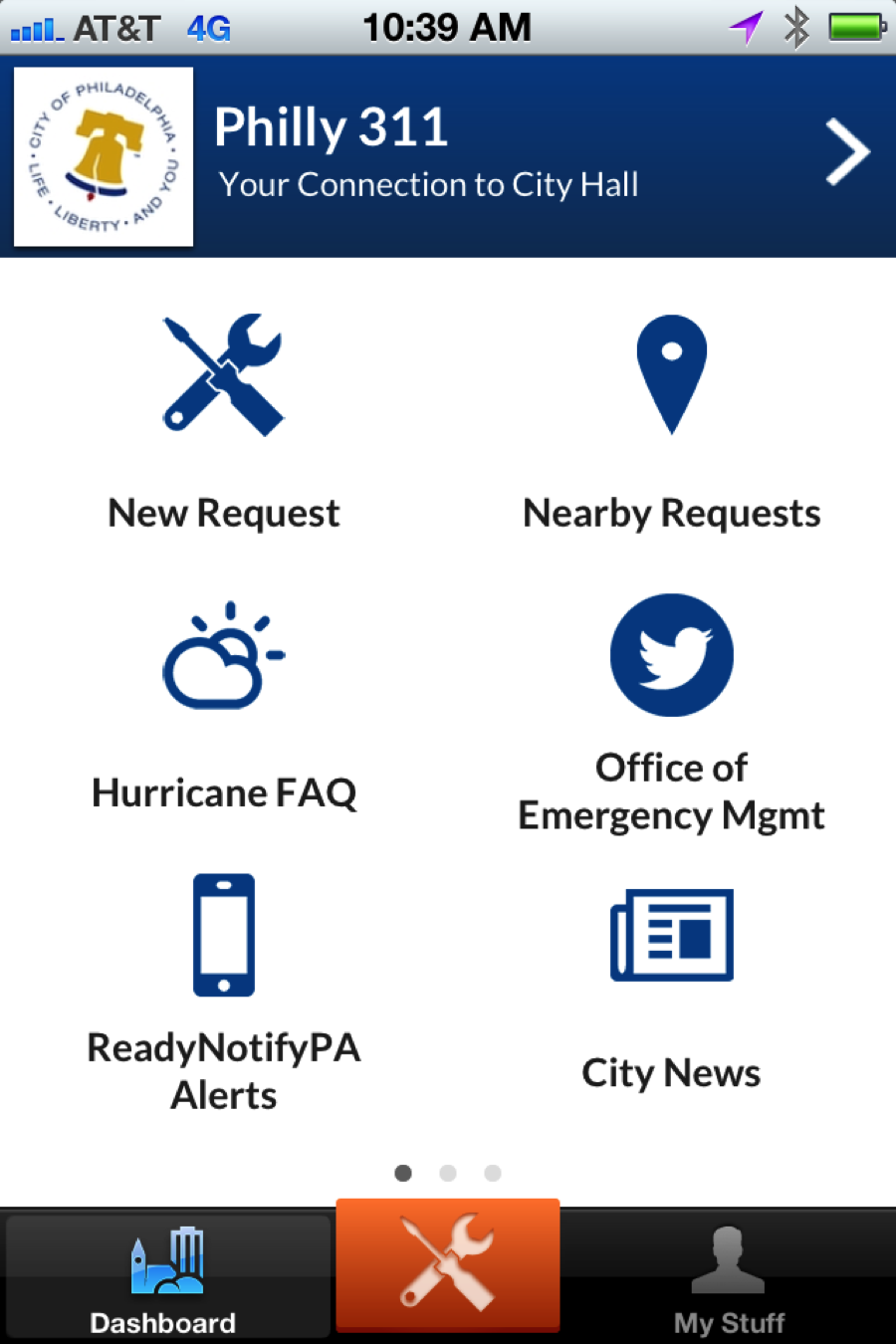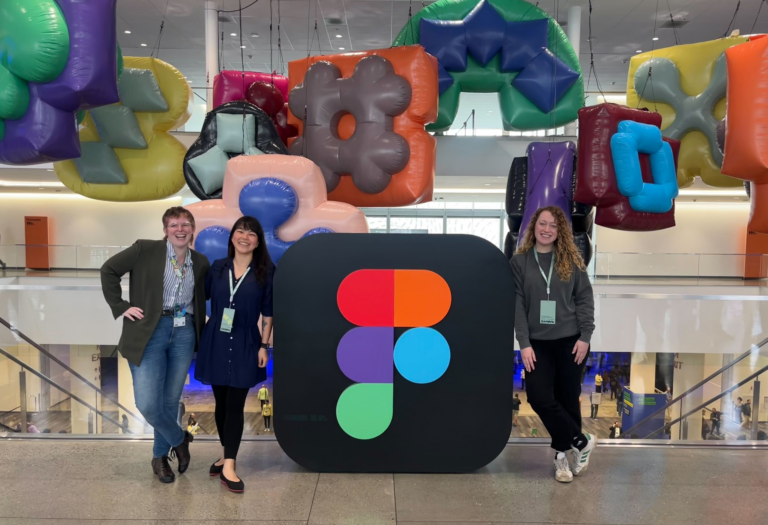Usability of Emergency Notifications

For those of you unfamiliar with the Philadelphia area, Think Brownstone’s Conshohocken office is located just west of the city, so all of us who work here were right in the path of Hurricane Sandy. As I write this, some of us are still without power, while for others it’s back to life-as-usual. Luckily, none of us have experienced a direct loss of life or property as a result of the storm, but it has certainly brought the tenuous nature of our lives into focus for many of us (once again).
Earlier last week, as we were all trying to get a sense of what was happening, Phil and I both took some minutes to evaluate the various methods by which our cities, townships, and government agencies were disseminating information. The high-level takeaway is that these organizations have–for the most part–made huge leaps forward in both the tactical and strategic ways they get critical updates to their constituencies. Of course, some do it better than others. Here are a few examples and rules of thumb that we noticed during our own personal experiences with Sandy.
Establish a recognizable, centralized brand
Philly311 is Philadelphia’s general-purpose information property. That branding carries through from their handle on twitter and facebook… to the mobile app… and to the philly311.com URL which redirects to the .gov site.
Practice good SEO
People will likely search for services and information. “Good SEO” in this case means keeping your content fresh, relevant, and accessible to search engine crawlers. It might not always be pretty, but keeping your updates simple and to the point makes it easier to update them more frequently and provides even greater value.

Make communications a two-way street
In asynchronous channels like Twitter and Facebook, provide critical information and engage audience members who engage you. This may become overwhelming, but the assistance is likely less work than synchronous channels like phone lines. Remember, if you answer a question on the phone, only one person hears it. If you broadcast the answer, many hear it.
Customize your channels to emergent issues
In times of emergency, create customized feeds and interactions to focus on that need.

Avoid vague language and jargon
It is unlikely that most of Philadelphia knows what “Code Gray” means. It’s OK to use it with the staff that understands those needs, and it’s good to be brief, but don’t sacrifice value for brevity.

Broader is better
During emergencies, you cannot count on any single channel of information to be open, so use as many as possible to reach the broadest audience. Posting press conferences to YouTube is great, but chances are your audience may be on mobile devices with limited battery/power options (and not everyone has a smartphone).
Consistency is key
Mayor Bloomberg of New York and Mayor Nutter of Philadelphia both have been seen in press conferences rattling off the bevy of information sources their cities provide. Ensure your spokespeople are aware of the sources, repeat them often and understand what they all provide. In Philadelphia, there is a difference between when to contact 311 and 911 – and Mayor Nutter was very clear when to use which during his press conferences.
Experience designers are constantly facing the challenge of showing that quality design and usability are more than “nice-to-haves.” While disasters like Sandy are something we’d rather not deal with, they can be instructive in the way that they focus our attention and force us to re-examine key goals and foundational principles. The next time the unexpected strikes, will your organization be ready to provide critical, timely information to your constituents? That’s not a nice-to-have, that’s a do-it-now.



